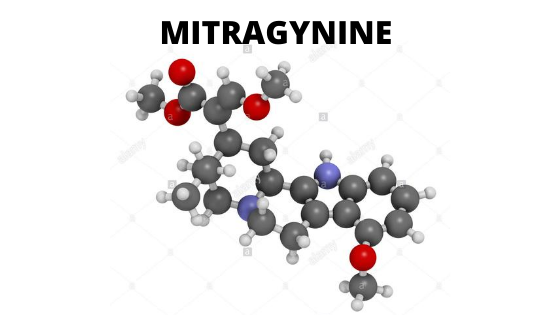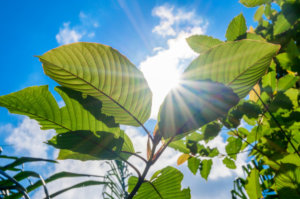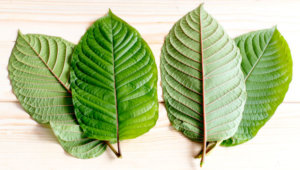Blog, Kratom for Sale, Mitragyna Speciosa
What You Need To Know About Mitragynine
Kratom comes from Mitragyna Speciosa, a tropical evergreen tree in the coffee family originally found in Southeast Asia. Even though all Kratom comes from the same species, the prominent active ingredients give each plant unique qualities.
Kratom is all the rage right now. But, if you want to know more about Kratom, you have to start with the primary ingredient of the plant — Mitragynine. You can guess the importance of this alkaloid by the name of the species Mitragyna Speciosa.
As each Kratom leaf has different concentrations of Mitragynine, no two plants are alike. To give you more clarification on Kratom, here’s all you need to know about Mitragynine.
Prominent Active Ingredients in Kratom
Before we go into the principal active ingredients in the Kratom leaf, here’s a quick definition of active ingredients. The active ingredients in alkaloid compounds and plants refer to the components that are activated biologically.
The purer an active ingredient in the Kratom product, the higher the quality it offers.
Now, let’s discuss in detail the active ingredients in Kratom. Altogether, Kratom contains about 40 different compounds, most of which are alkaloids. Some of these alkaloids are related to each other, while others can be classified as terpenoid saponins, glycosides, flavonoids, and polyphenols.
However, these compounds come from different parts of the Kratom tree. So, when we talk about the compounds in a single Kratom leaf, we only have alkaloids and flavonoids.
The two most active alkaloids in the leaf are Mitragynine and 7-Hydroxymitragynine. Mitragynine makes up on average about 66% of total alkaloid content in a Kratom leaf.
The concentration of Mitragynine plays a significant part in the uniqueness of each Kratom plant. The variation of alkaloid distribution results from several factors like the geographical location and the stage of maturity of Kratom.
These wide variations broaden the landscape of choices for Kratom enthusiasts around the world. However, it is important that you buy Kratom only from authentic sources like Kratom K.
What is Mitragynine?
In scientific terms, Mitragynine is an indole-based psychoactive alkaloid which is only present in the Kratom leaves. Even the active alkaloid 7-hydroxymitragynine is derived from Mitragynine, making the Kratom tree one-of-a-kind.
The concentration of Mitragynine in a Kratom leaf also depends on the Kratom strain and vein color. In Thai varieties, Mitragynine makes up about 66% of the total alkaloids, while 7-hydroxymitragynine is only present in minor quantities.
The Malaysian types (Malay Kratom) usually have a lower concentration of Mitragynine, making about 12% of the total active alkaloids.
Mitragynine has a complex composition, so the variations in its amount can lead to significant changes in the plant. After the experts identified Mitragynine in 1921, it took them more than four decades to identify its molecular structure.
The alkaloid has the molecular formula C23H30N2O4, and its molecular weight is 398.50 g/mol. The compound melts at around 102°C to 106°C.
In scientific journals, Mitragynine goes by several other chemical names listed below:
- SK&F 12711
- 18-seco-20α-yohimban-16-carboxylic acid methyl ester
- 9-methoxycorynantheidine
- 17-dimethoxy-17
- (E)-16,17-didehydro-9
Since Mitragynine’s chemical composition is so complex, we can’t produce it inside laboratories by ourselves. The compound is even insoluble in water.
The only source of Mitragynine is the Kratom tree, which adds to the importance of the tree that only has one identified species.
Mitragynine and Leaf Vein Colors
Kratom has varieties that are usually divided by red, green, and white vein colors, which say a lot about the plant. There are a few special varieties, too, like gold or yellow, that are sourced using a variety of drying techniques.
We can understand the difference between the red and green Kratom as red being more mature and green being younger. In simpler words:
- Green vein leaves are harvested when the leaves on the tree are still young.
- Red vein Kratom leaves receive lots of light and sun exposure.
- White vein leaves are harvested after the plant is given enough time to mature.
These variations are responsible for the varying Mitragynine concentrations in the Kratom leaves, Kratom powders, Kratom capsules, and Kratom extracts.
For instance, as the green vein leaves are still young, the concentration of alkaloids is still low. As the leaves mature, the alkaloids increase with the most mature leaves having the highest levels of Mitragynine.
Wrap-Up
Mitragynine is a major component of the Kratom leaf as it affects the final composition and qualities of a plant. What makes it interesting is exclusivity to Kratom tree and complex structure, still impossible for humans to replicate.
By now, we believe you know enough about Mitragynine to take a step further and explore Kratom with more clarity. To learn more, keep following our Kratom blog for more updated articles.





